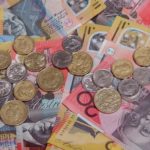On Monday (in GMT terms) gold for delivery in December traded within the range of $1,251.1-$1,258.2. Futures closed at $1,256.6, inching up 0.09% compared to Friday’s close. It has been the 168th gain in the past 360 trading days. The precious metal has pared its drop to 4.59% so far during the current month, after gaining 0.43% in September.
On the Comex division of the New York Mercantile Exchange, gold futures for delivery in December were edging up 0.48% on Tuesday to trade at $1,262.6 per troy ounce. The precious metal went up as high as $1,265.0 during early European trade, while the current daily low was at $1,255.9 per troy ounce, recorded during the early phase of the Asian trading session.
The US Dollar Index, a gauge reflecting the relative strength of the greenback against a basket of 6 other major currencies, was edging down 0.15% on the day at a level of 97.71, after going down as low as 97.60 earlier. Yesterday the index climbed to 98.15, or its highest level since March 10th. The gauge has pared its advance to 2.44% so far in October, following a 0.65% drop in September.
Yesterday gold futures rebounded from one-week lows, as the US Dollar eased from highs not seen since early March, following a public appearance by the No. 2 US central banker, Stanley Fischer. During his speech at the Economic Club of New York, the Fed Vice Chair noted that the Bank was “very close” to its objectives regarding US employment and inflation. “We are very close to our targets of maximum sustainable employment and 2-percent inflation”, Fischer said, cited by Reuters. “To change that target if you are so close, thats a problem.”
However, he also noted the Federal Reserve should not strive to overshoot its objective on employment with too much stimulus.
In case borrowing costs remain low, in regard to other policy tools such as quantitative easing and forward guidance, Fischer said that “these alternatives are not perfect substitutes for conventional policy. The limitation on monetary policy imposed by low trend interest rates could therefore lead to longer and deeper recessions when the economy is hit by negative shocks.”
The Fed Vice Chair did not make any remarks on the possibility of raising the target range for the federal funds rate at the upcoming FOMC meetings in November and December.
Today market participants will be paying a close attention to US consumer price inflation report for further clues over macroeconomic performance and the Feds rate hike prospects. The annualized consumer inflation in the United States probably accelerated to 1.5% in September, according to market expectations, from 1.1% in the preceding month. If so, this would be the highest inflation rate since October 2014. In monthly terms, the Consumer Price Index (CPI) probably rose 0.3% in September, according to the market consensus, following a 0.2% increase in the prior month. At the same time, the annualized core consumer inflation, which is stripped of prices of food and energy, probably remained stable at 2.3% in September, according to market consensus. If expectations were met or even exceeded, this would add to the case of removing policy accommodation. The Bureau of Labor Statistics is to release the official CPI report at 12:30 GMT.
Meanwhile, investor medium-term rate hike expectations remained almost without change at four-month highs.
According to CME’s FedWatch Tool, as of October 17th, market players saw an 8.3% chance of a rate hike occurring at the Federal Reserve’s policy meeting in November, or unchanged compared to the prior six business days, and a 69.5% chance of a hike in December, or unchanged from the preceding business day. As far as the February 1st 2017 meeting is concerned, the probability of such a move was seen at 71.3% on October 17th, down from 71.9% in the prior business day.
Daily, Weekly and Monthly Pivot Levels
By employing the Camarilla calculation method, the daily levels of importance for gold are presented as follows:
R1 – $1,257.3
R2 – $1,257.9
R3 (Range Resistance – Sell) – $1,258.6
R4 (Long Breakout) – $1,260.5
R5 (Breakout Target 1) – $1,262.8
R6 (Breakout Target 2) – $1,263.7
S1 – $1,255.9
S2 – $1,255.3
S3 (Range Support – Buy) – $1,254.6
S4 (Short Breakout) – $1,252.7
S5 (Breakout Target 1) – $1,250.4
S6 (Breakout Target 2) – $1,249.5
By using the traditional method of calculation, the weekly levels of importance for gold are presented as follows:
Central Pivot Point – $1,256.4
R1 – $1,265.9
R2 – $1,276.3
R3 – $1,285.8
R4 – $1,295.3
S1 – $1,246.0
S2 – $1,236.5
S3 – $1,226.1
S4 – $1,215.7
In monthly terms, for the yellow metal we have the following pivots:
Central Pivot Point – $1,326.7
R1 – $1,348.0
R2 – $1,378.8
R3 – $1,400.1
R4 – $1,421.3
S1 – $1,295.9
S2 – $1,274.6
S3 – $1,243.8
S4 – $1,212.9





